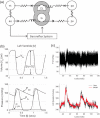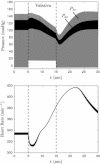Multiscale modeling and data integration in the virtual physiological rat project
- PMID: 22805979
- PMCID: PMC3463790
- DOI: 10.1007/s10439-012-0611-7
Multiscale modeling and data integration in the virtual physiological rat project
Abstract
It has become increasingly evident that the descriptions of many complex diseases are only possible by taking into account multiple influences at different physiological scales. To do this with computational models often requires the integration of several models that have overlapping scales (genes to molecules, molecules to cells, cells to tissues). The Virtual Physiological Rat (VPR) Project, a National Institute of General Medical Sciences (NIGMS) funded National Center of Systems Biology, is tasked with mechanistically describing several complex diseases and is therefore identifying methods to facilitate the process of model integration across physiological scales. In addition, the VPR has a considerable experimental component and the resultant data must be integrated into these composite multiscale models and made available to the research community. A perspective of the current state of the art in model integration and sharing along with archiving of experimental data will be presented here in the context of multiscale physiological models. It was found that current ontological, model and data repository resources and integrative software tools are sufficient to create composite models from separate existing models and the example composite model developed here exhibits emergent behavior not predicted by the separate models.
Figures





Similar articles
-
A software framework for multiscale and multilevel physiological model integration and simulation.Annu Int Conf IEEE Eng Med Biol Soc. 2008;2008:5449-53. doi: 10.1109/IEMBS.2008.4650447. Annu Int Conf IEEE Eng Med Biol Soc. 2008. PMID: 19163950
-
Design of a framework for modeling, integration and simulation of physiological models.Comput Methods Programs Biomed. 2012 Sep;107(3):524-37. doi: 10.1016/j.cmpb.2011.11.010. Epub 2012 Feb 10. Comput Methods Programs Biomed. 2012. PMID: 22309809
-
Multiscale Computational Modeling of Vascular Adaptation: A Systems Biology Approach Using Agent-Based Models.Front Bioeng Biotechnol. 2021 Nov 2;9:744560. doi: 10.3389/fbioe.2021.744560. eCollection 2021. Front Bioeng Biotechnol. 2021. PMID: 34796166 Free PMC article. Review.
-
Design of a framework for modeling, integration and simulation of physiological models.Annu Int Conf IEEE Eng Med Biol Soc. 2010;2010:1485-9. doi: 10.1109/IEMBS.2010.5626848. Annu Int Conf IEEE Eng Med Biol Soc. 2010. PMID: 21096363
-
Multiscale plant modeling: from genome to phenome and beyond.Emerg Top Life Sci. 2021 May 21;5(2):231-237. doi: 10.1042/ETLS20200276. Emerg Top Life Sci. 2021. PMID: 33543231 Free PMC article. Review.
Cited by
-
Tuneable resolution as a systems biology approach for multi-scale, multi-compartment computational models.Wiley Interdiscip Rev Syst Biol Med. 2014 Jul-Aug;6(4):289-309. doi: 10.1002/wsbm.1270. Epub 2014 May 9. Wiley Interdiscip Rev Syst Biol Med. 2014. PMID: 24810243 Free PMC article. Review.
-
Computational analysis of the regulation of Ca(2+) dynamics in rat ventricular myocytes.Phys Biol. 2015 Sep 11;12(5):056008. doi: 10.1088/1478-3975/12/5/056008. Phys Biol. 2015. PMID: 26358004 Free PMC article.
-
Predicting the murine enterocyte metabolic response to diets that differ in lipid and carbohydrate composition.Sci Rep. 2017 Aug 18;7(1):8784. doi: 10.1038/s41598-017-07350-1. Sci Rep. 2017. PMID: 28821741 Free PMC article.
-
A Novel Method to Verify Multilevel Computational Models of Biological Systems Using Multiscale Spatio-Temporal Meta Model Checking.PLoS One. 2016 May 17;11(5):e0154847. doi: 10.1371/journal.pone.0154847. eCollection 2016. PLoS One. 2016. PMID: 27187178 Free PMC article.
-
Crops In Silico: Generating Virtual Crops Using an Integrative and Multi-scale Modeling Platform.Front Plant Sci. 2017 May 15;8:786. doi: 10.3389/fpls.2017.00786. eCollection 2017. Front Plant Sci. 2017. PMID: 28555150 Free PMC article.
References
-
- Blake, J. A., and M. A. Harris. The Gene Ontology (GO) project: structured vocabularies for molecular biology and their application to genome and expression analysis. Curr. Protoc. Bioinformatics, Chap. 7:Unit 7.2, 2002. - PubMed
Publication types
MeSH terms
Grants and funding
LinkOut - more resources
Full Text Sources

